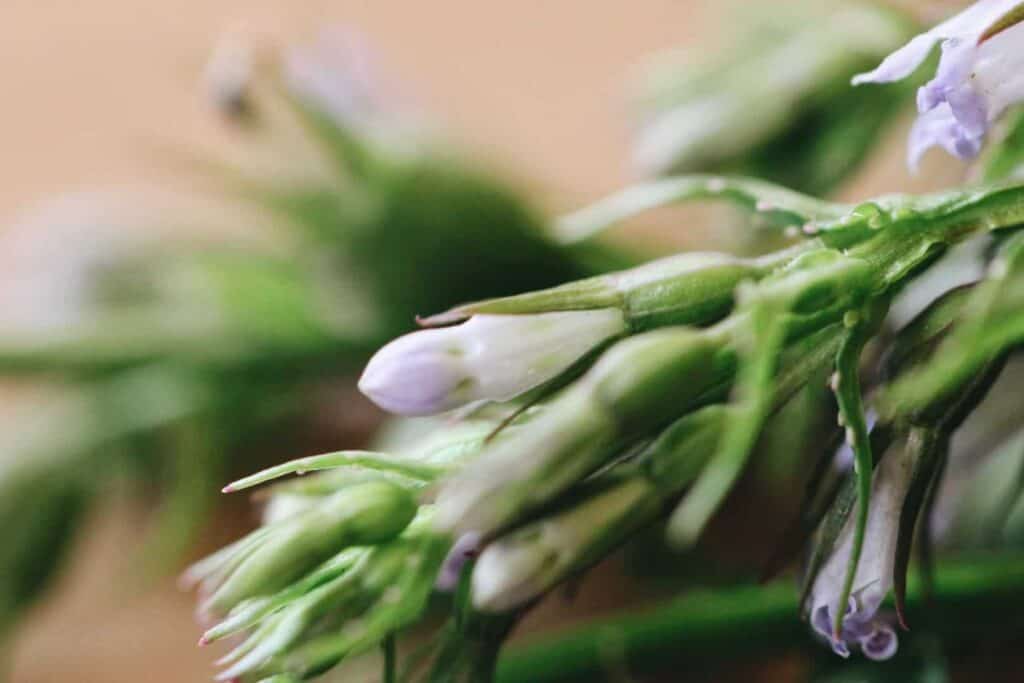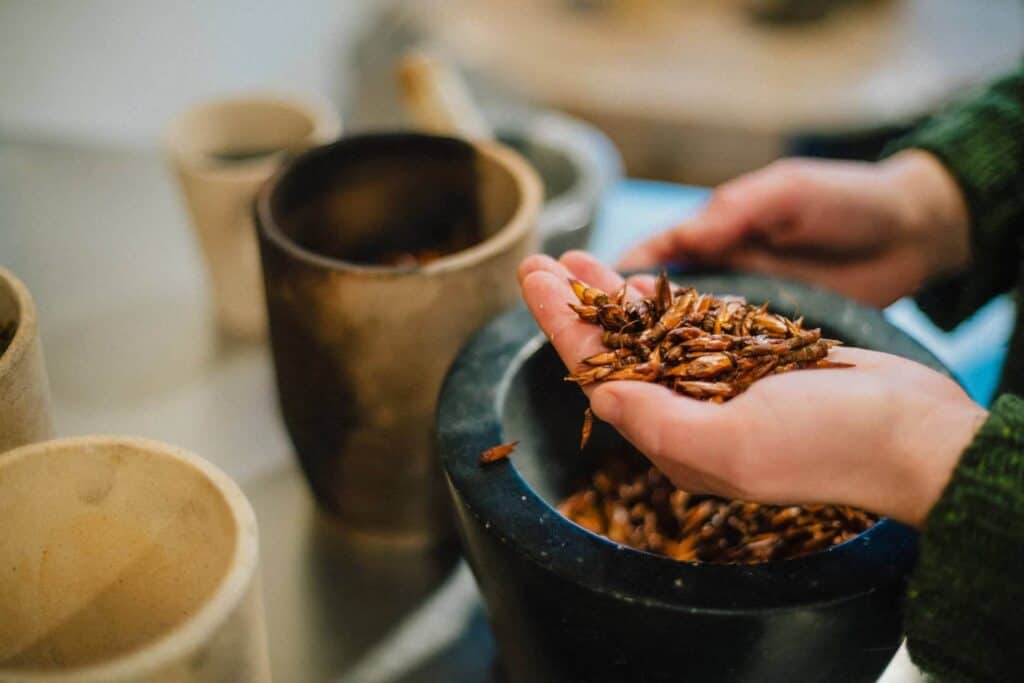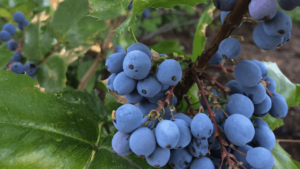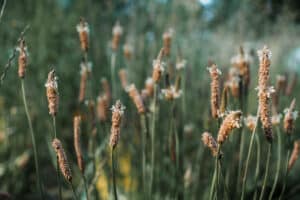Alchemical philosophy and practice radically changes our approach to herbal medicine. By re-integrating spirituality with science, you can unlock the full potential of herbal medicine through spagyric pharmacy, or alchemically prepared plants. But before preparing spagyric medicines, it’s important to understand the fundamental core principles of alchemical philosophy, the foundation of which is the correlations and connections between the microcosm and macrocosm.
In today’s blog post, you’ll learn:
- About alchemy’s core philosophical roots
- The alchemical framework for understanding the body, spirit, and soul
- How to see underlying patterns in symptoms
- Why studying herbalism holistically makes learning plants easier
- How alchemy can practically improve your life
Table of Contents

Welcome to part two of our alchemy and herbalism series. In the previous episode, I shared how modern science developed from alchemy, and as its spiritual roots gradually dissolved, the mechanistic scientific model that exists today came to fruition.
The split between spirit and science rippled into cultures worldwide, and ultimately influenced herbal medicine. I believe this has had some positive influences, in the sense that we now know more than ever about how plants influence the body through the modern pharmacological model. But it certainly had negative impacts as well, most notably in how a reverence for the spiritual qualities of plants is forgotten along with the traditional energetic understanding of how plants heal. A major goal of the alchemical model of herbalism is to re-instill spirituality with science, so we can unlock the true healing potential of herbal medicine.
Everything in the alchemical tradition is twofold, based on philosophy and practice. The philosophy entails learning how to see the unity within all living things and the connection between the body, spirit, and soul. The most notable representation of this philosophy is understanding the pattern of the macrocosm of nature and its influence on the microcosm, particularly people and plants.
The practice, however, is all about preparing and administering herbal medicine with that holistic understanding in mind. Philosophy is not enough when it stands alone, and conversely, practice without philosophy lacks the proper guidance. If you want to see transformative results in your herbalism practice, you need to put the philosophy to work in practice.
Incorporating the alchemical philosophy into your herbalism practice can have a profound impact on your understanding of the world and the healing power of nature. By learning to see the unity within all things and approaching herbal medicine with this holistic perspective, you can unlock the true potential of holistic herbalism and empower yourself and your community.
The Core Philosophy of Alchemy
The underlying core philosophy of alchemy can be summarized with the age-old adage so many have heard time and time again: “As above, so below.” But what does that really mean?
The alchemists of old had a deep understanding of the interconnectivity of all things. That there is meaning in the patterns in nature, both celestially and terrestrially. The order of our solar system is seen to reflect the larger structure of everything in life. They observed the fundamental Elements of Earth, Water, Fire, Air, and Ether, and how their interactions reveal an underlying pattern of creation that determines the qualities and characteristics of the whole and its parts. From the herbalists perspective, these “parts” are people and plants. Thus we want to learn to see how the pattern of the solar system (the planets), the pattern of the Elements, and their interactive forces— called the Three Philosophical Principles— influence and affect the human and botanical kingdoms.
These three layers of energetics (Planets, Elements, Principles) form the foundation of the macrocosmic pattern. Alchemy takes this blueprint and demonstrates how it permeates every aspect of nature, from plants and animals, to stones, minerals, and people. In essence, the alchemists recognized that the natural world is guided by a universal blueprint that underlies all forms of existence. It is our duty to study these patterns in nature and use them to better ourselves and use our plants effectively.
Alchemy posits that the universe is not a chaotic, random system. Rather, there is an inherent order, pattern, and rhythm to life. This belief is grounded in the observation of natural laws that govern the movements of planets, the changing of seasons, the cycles of life, and the inherent properties of various expressions of life. This fundamental order of the universe, or the macrocosm, shapes every aspect of existence.
This philosophy has profound implications for how you view the world. When you understand that everything is interconnected within this vast web of order, you can approach healing in a holistic manner, recognizing the complex relationships between all aspects of your client’s being. In essence, the alchemical philosophy invites you to adopt a new paradigm for understanding and interacting with the world around you.
A New Approach
When you view someone as a microcosm of the macrocosm, your approach to working with them shifts in several ways.
Herbalists are often sought out for help with physical, psychological, emotional, and sometimes even spiritual issues. Alchemy provides a framework you can follow for understanding someone in three parts: the body, the spirit, and the soul.
Your body is made up of organs and tissues. Your spirit is composed of your thoughts, emotions, and psychology. And your soul refers to your essence. Although people often view these parts as separate, alchemy teaches you to treat someone as if all three are interconnected. By understanding the interplay between each of these levels, you can heal people in a more comprehensive, holistic, and effective manner.
This approach to understanding people applies equally to plants, planets, and even the Elements. From this understanding, they also have physical, psychological, and spiritual applications.
For example, the Water Element has physical correspondences in the body, such as the urinary tract and lymphatic and reproductive systems. However, it also connects with certain emotions and an overall state of being.
Through understanding people, plants, planets, and the Elements through this three-fold pattern, you unlock the information needed to see beyond the symptoms and into a core imbalance. With this perspective, you can help someone achieve true healing on the holistic level.

A Holistic Model for People
As an herbalist, one of the most challenging aspects you face is deciphering the underlying pattern of imbalance in your client so you can help them. Alchemy zooms you out from the symptoms and helps you see the person as a whole so you can see how everything connects. Working with your clients in this way doesn’t just put a band-aid on their symptoms, but balances them on an archetypical level.
According to the alchemical perspective, everyone contains archetypal planetary and elemental forces (ie the macrocosm within the microcosm). In other words, we all have every planet and element within us, just in varying degrees and ratios. Some are excessive, some are deficient, some are well integrated, and others are not. This is what determines our own unique physiological, psychological and spiritual temperament. The goal of alchemy is to progressively work through each archetypal force and to transform it into a well-integrated, healthy mode of expression while managing their more challenging aspects.
For example, imagine a client comes to you with chronic respiratory tract issues, such as asthma and bronchial constriction. Through your intake, you learn that their nervous system is wound up, and they are prone to chronic stress and anxiety. Later, you learn they struggle to communicate and express themselves well through language. From this pattern, you can see they have an imbalance of planet Mercury on the physical, emotional, and spiritual planes.
In this case, you could postulate that this person does not have a well-integrated Mercury. Resultantly, they are facing increasing challenges with their physical, emotional, and mental health in relation to this planet. From this perspective, the archetype is essentially trying to get the person’s attention to help them become aware of what they need to work on within themselves, revealing how their microcosm is out of balance with the macrocosm. By bringing awareness to this archetypal imbalance, they can resolve blockages and channel this part of themselves in a healthier way. Hence, we work with plants the contain strong Mercurial qualities to help rebalance and retrain this archetype to manifest in a more congruent manner.
From the alchemical approach, you would not simply suggest herbs that help lower anxiety or improve respiratory health. You would select a remedy that balances the archetype at its root. In this case, you could suggest a relaxant herbal remedy with an affinity for the nervous and respiratory systems that is governed by Mercury, such as Lobelia (Lobelia inflata).
Lobelia embodies the essence of planet Mercury, and because of that, it will work on its psychological, emotional, and spiritual levels when prepared alchemically. Mercury tends to produce spasming, constriction, and tension, and Lobelia balances this pattern. You can see Lobelia’s planetary correspondence with its acrid flavor, which indicates its powerful relaxant and antispasmodic property. It has a strong affinity for the lungs and the respiratory and nervous systems, which are all ruled by Mercury. Because Lobelia is working on the archetypal level of Mercury, it will not only help with the symptoms of the respiratory tract infection but with language, cognition, and communication as well.
By looking at the underlying archetypal patterns in the symptoms, you can think of an herbal medicine that not only provides relief for physical symptoms, but corrects the imbalance and its very root. Through this approach, you can provide the best medicine: prevention.

A Holistic Model for Plants
Similar to the holistic model of working with people, it is best to study plants by learning how their physical, mental, and spiritual virtues connect.
Many people focus exclusively on one of these planes. Flower essence practitioners focus in on the emotional, mental or spiritual attributes. Many herbalists just work with the physical properties of the plants. The issue with that approach is that you miss out on the unifying thread that connects them, and you receive a fractured image of how the herb works. It also makes learning about herbs much more difficult because instead of studying a plant in a holistic picture, you are stuck memorizing loads of facts that are seemingly unrelated.
For example, take a look at Cayenne pepper (Capsicum annuum). Through the first approach, you would study its biochemical constituents in one book, herbal actions in another, and spiritual applications through perhaps a flower essence repertory (if the plant is even in there…)
Through the alchemical model, everything starts to stick and glue together. Cayenne is a fiery red-colored plant that is spicy, pungent, and oily. It circulates the blood, improves cardiovascular functioning, and raises the internal temperature, which makes it helpful for a fever. All of these traits point back to the Fire Element. With that information, you know how it will influence someone constitutionally in the body, spirit, and soul.
This example shows you how you can classify, understand, and categorize Materia Medica in the alchemical tradition by Elements or Planets. Rather than organizing based on organ systems or herbal actions, you learn how to see the essence of the plant, that is, how it embodies the pattern of the macrocosm. We also might call this the plant’s “archetypal constitution.” This essence reflects in its planetary and elemental qualities and characteristics, and radiates into every attribute of it. When you see the macrocosm of the plant and how it relates to the larger blueprint of nature, you can use this essence to balance the essence within a person.
Viewing plants with this holistic lens benefits you as an herbalist because it reveals the relationship between a plant’s morphology, growing environment, chemistry, herbal actions, energetics, psycho-spiritual properties, and more. It ties them together and offers you a profound holistic understanding of how and why the plant works in the way it does. All in all, this leads you to develop a deep understanding of medicinal herbs, far more than you could have gained from studying its divided parts without its united whole in mind.

Alchemy in Practice
As you can see, the alchemical model of herbal medicine is quite distinct from other models and approaches. It requires a reframing in how we view the world around us, a perception not based in separation, but in unity, correlation, correspondence, and connection. A perspective that sees meaning in the world around us, communication from all aspects of nature, and an underlying harmony in the universe that we are a unique part of.
For the practice of alchemy to be truly effective, you need to understand its underlying principles. I would distill the essence of the alchemical philosophy as; everything is a microcosm of the macrocosm, and the evolution of the self happens when you learn to see correspondences and patterns between people, nature, and the universe itself.
The ultimate goal of alchemy is to achieve wholeness. When you can learn how to see the microcosm in the macrocosm and develop a relationship with yourself and nature that reflects this, you achieve a state of harmony and balance within your life.
Alchemy is both a highly intellectual and heart-based system. What I mean by this is that while your mind compartmentalizes things and works through division and analysis, your heart perceives the unity and relationships between all things. This balance lays the philosophical foundation for the practice of alchemy, for we need to learn to perceive these patterns of connection and relationship in nature for ourselves, and then an intellectual model to understand them, and ultimately use them for healing. This balance of the heart and the mind, the intuition and the intellect is yet another expression of the ancient adage of as above, so below, and the unification of the science and spirit of herbal medicine.
But of course, the actual practice of alchemy goes beyond this and into where it all comes to life: the lab, which we’ll be covering in a bit more detail in the next episode of this series: Spiritual Herbal Pharmacy and Spagyrics.








